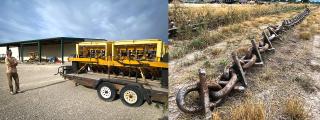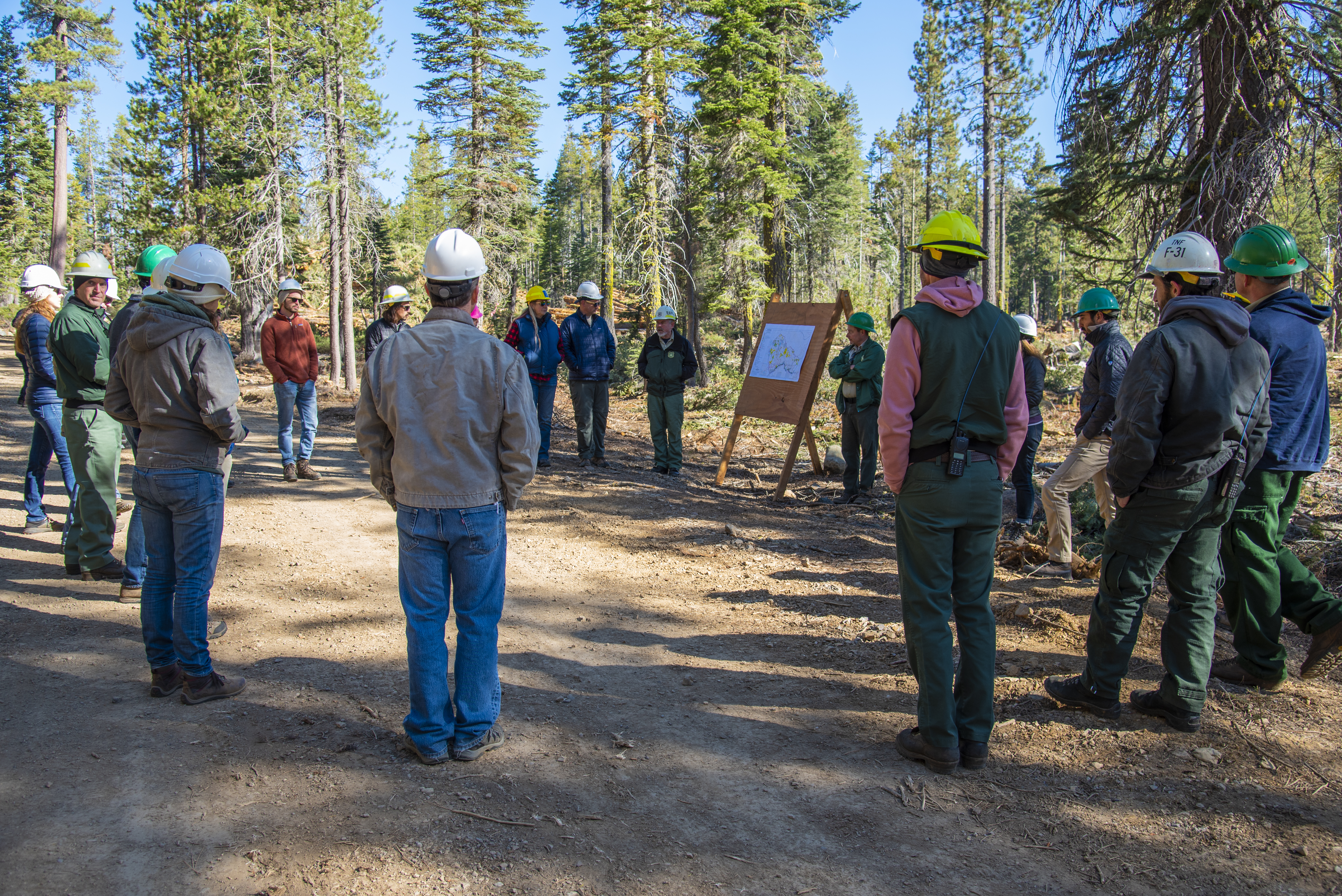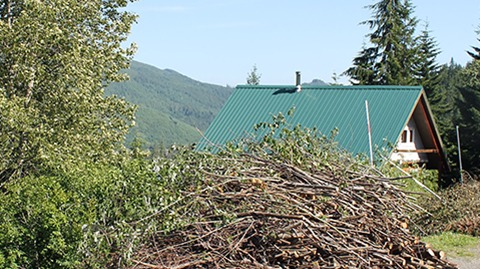
In a large climate-controlled warehouse in central Utah, hundreds of thousands of pounds of seed in white feed bags are stacked to the ceiling on industrial shelves like a rangeland Costco.
In mid-September, the peak of their busy season, employees from the Utah Division of Wildlife Resources create custom seed mixes at the Great Basin Research Center for landscapes in need of habitat restoration.

Twelve bulk-sized totes, 1,250 pounds each, have just been freshly mixed and sit on pallets waiting for transport to the Dixie National Forest in southwestern Utah. When they arrive in New Harmony, Utah, a telescoping forklift will load them onto an airplane to get scattered across 1,000 acres of a freshly masticated fuel break.
A century of fire suppression has allowed pinyon-juniper woodlands to encroach onto sagebrush habitat, resulting in significant fuel buildup and increased wildfire risk. The Pine Valley Ranger District has contracted heavy equipment operators to masticate vegetation in areas where a fire would threaten nearby communities and infrastructure, wildlife habitat, and the local watershed.
After the U.S. Department of Agriculture’s Forest Service announced a strategy to address the wildfire crisis, funding from the Infrastructure Investment and Jobs Act, and the Inflation Reduction Act granted $7 million for the Pine Valley landscape to reduce wildfire fuels across 140,000 acres over the next 10 years. This year, the Pine Valley Ranger District has removed fuels on nearly 5,000 acres of pinyon-juniper woodlands. Some areas will receive a custom seed mix to help restore the land.

Right before snowfall is the ideal time to sow seed, and while the soil is freshly disturbed, for the best chance of germination by next spring. Coming up with the mix requires input from several specialists.
“We don’t do any standard mix. Every project is a customized mix for that project to try and meet project objectives and site potential,” explained Kevin Gunnell, the habitat coordinator at the Great Basin Research Center. “We work with project managers to develop that mix because they know the landscape better than us. Once it’s finalized, I create a recipe that I send out to our mixing crew.”
For the Pine Valley landscape, Gunnell worked with Mark Madsen, the forest’s botanist, and Rhett Boswell, the district’s wildlife biologist, to create the recipe. The collaboration between them is made possible by Utah's Watershed Restoration Initiative, a state partnership program for the improvement of high priority watersheds and landscapes.
“We need to consider all the resources that the treatment action may impact, so even if a project’s main goal is fire protection or fuels reduction, we likely have opportunities to improve wildlife habitat, increase livestock forage, address recreation needs and avoid disturbing important cultural resources,” said Boswell. “We want to create landscapes that are more resilient or resistant to fire and cheatgrass invasion, which may require including non-native species that are more fire-adapted and competitive with cheatgrass. That said, we do not want to put down species that are so competitive or aggressive that they outcompete areas that have a good existing native vegetation community. So, it’s a bit of a balancing act.”
Cheatgrass is a non-native noxious weed reviled by ranchers and conservationists that takes over as a monoculture when soil is disturbed. It spreads fire quickly and has poor value as forage for wildlife or livestock.
Many native plant seeds are scarce and not always available to be collected every year, inflating their cost. At the warehouse, there is a special shelf for those seeds, in much smaller bags than the rest.

“We call this our million-dollar rack,” said Boswell. “These are our native forb and native flower species. These species run from the teens to one hundred dollars plus per pound. When you see these bags, it’s the actual size of the collection they could legitimately make. It’s not just a cost constraint, it’s an availability constraint.”
The Great Basin Research Center started as a research project in the 1950s with the Forest Service. More than half a dozen seed vendors sprouted up in the area because of that project, and remain in operation today, Gunnell explained.
“The industry actually started right here around this project. These vendors service the entire western U.S. It’s one of the major seed collection and rangeland seed cleaning and collection industries,” he said.
The current facility was built in 2004 as a collaboration between the Forest Service and the Bureau of Land Management. It has the capacity to store up to 1.2 million pounds of seed in a year and even has a walk-in refrigerated unit for sagebrush seed. It also has a yard full of heavy equipment for several different seeding methods.
“Our first preference is the tried-and-true rangeland drill. They can roll over rocks and rough terrain, and you’re placing the seed where you want it to be,” said Gunnell. “The next is aerial application, and if we do aerial application, we still want to see the seed covered, so we’ll use chains a lot to bury that seed.”






